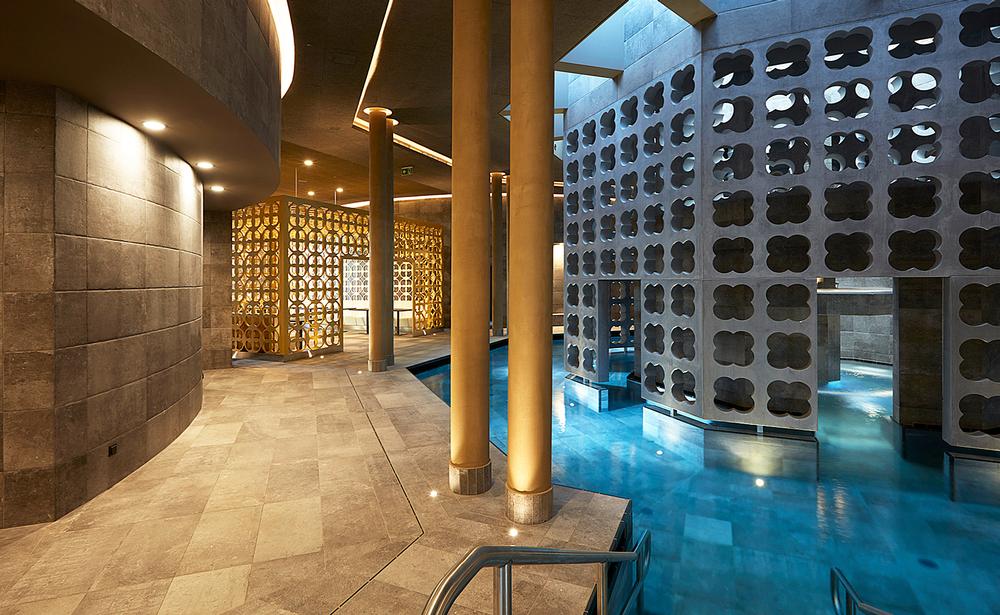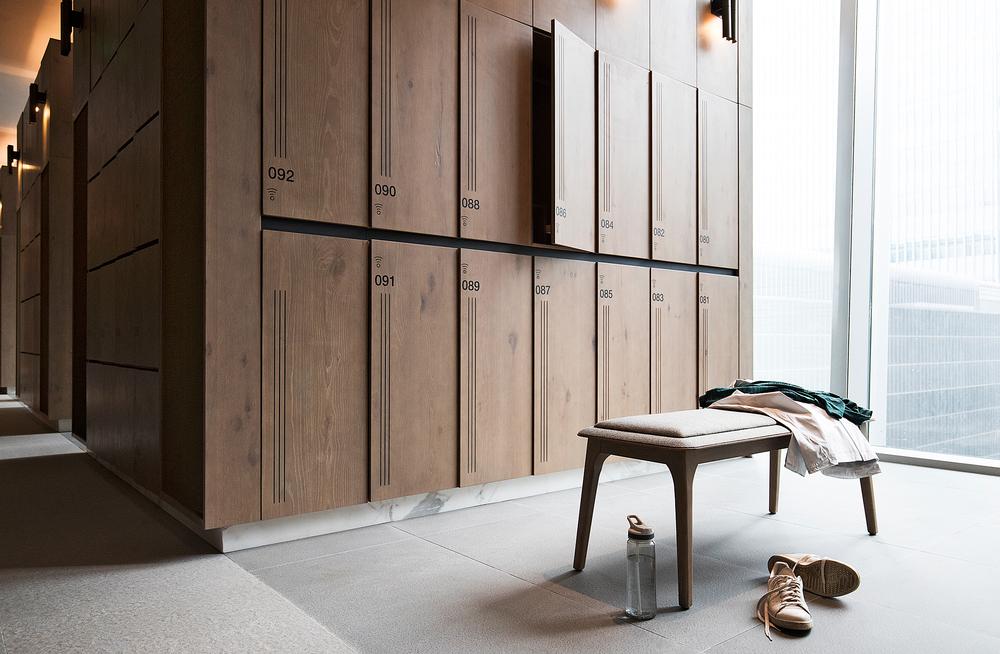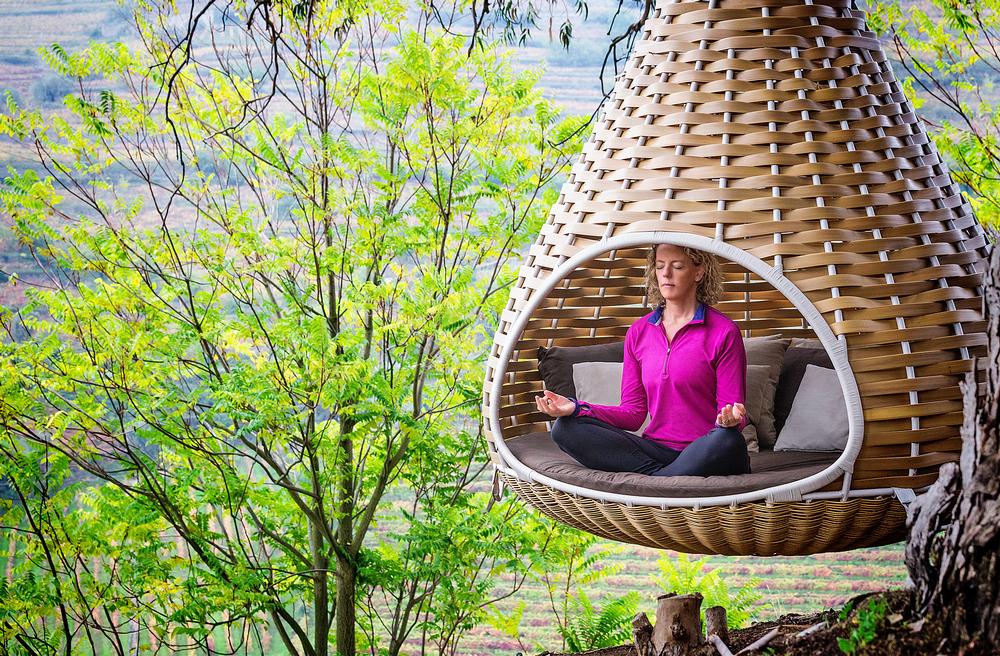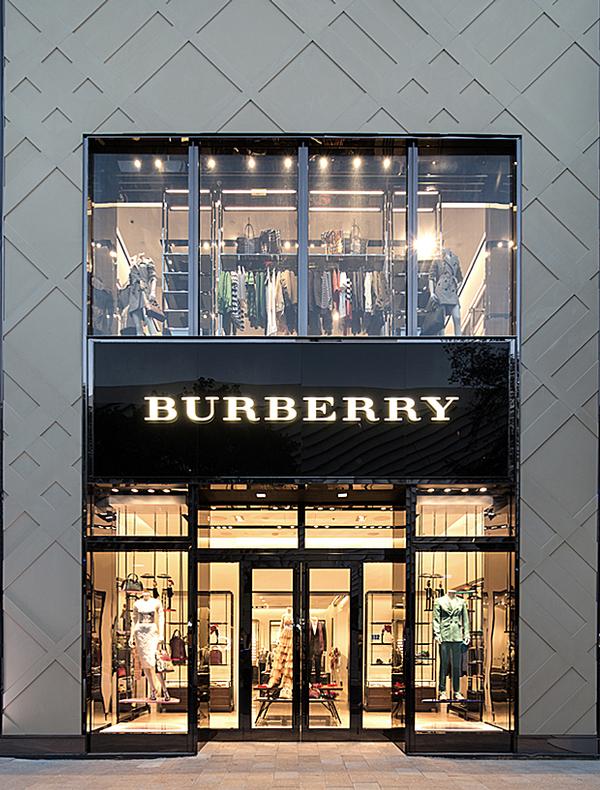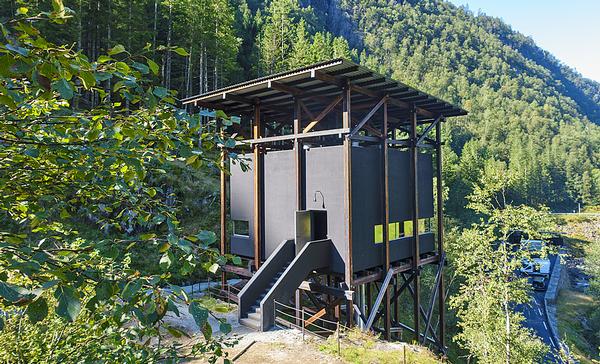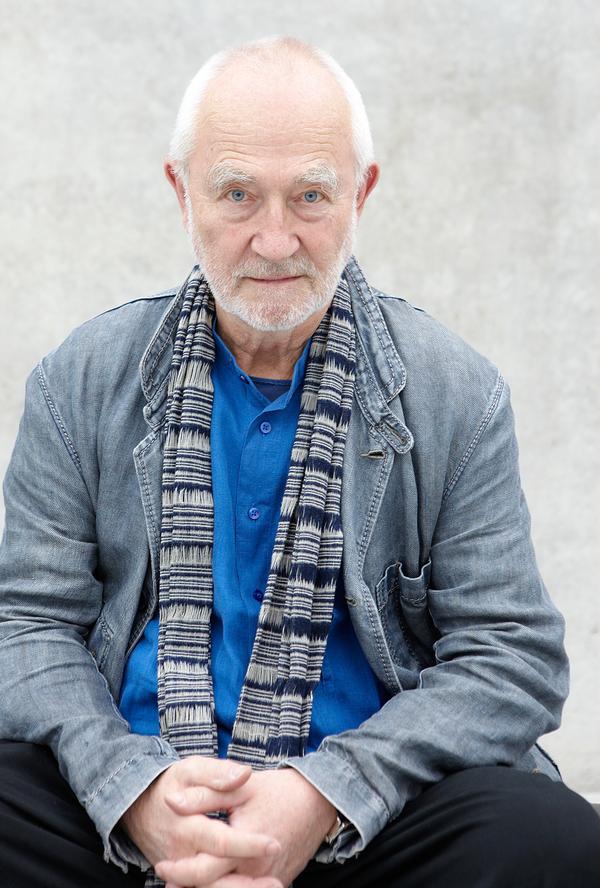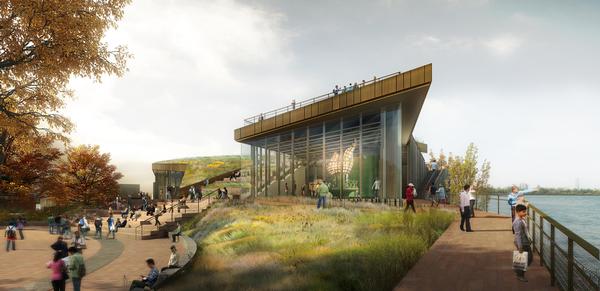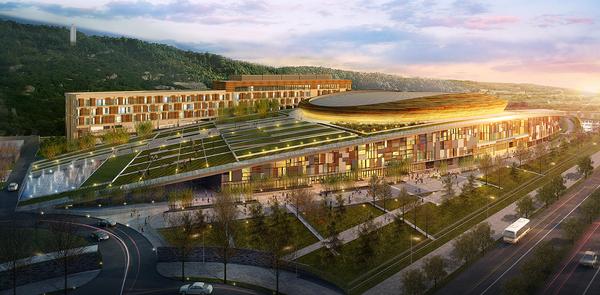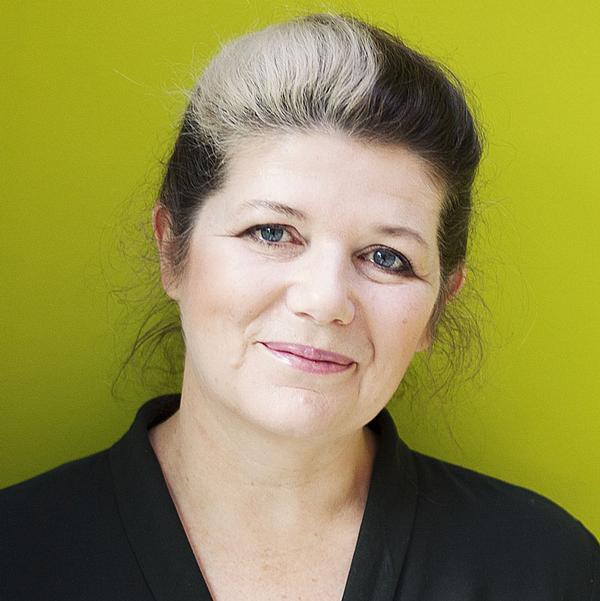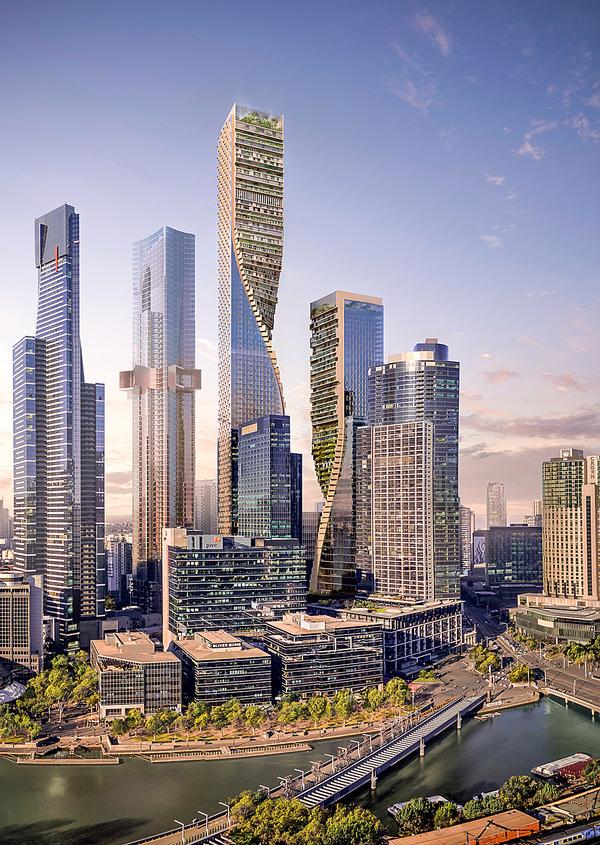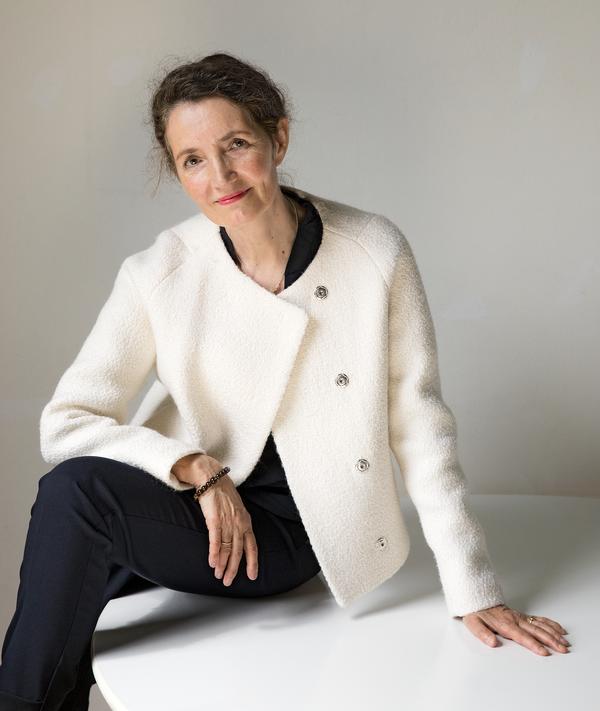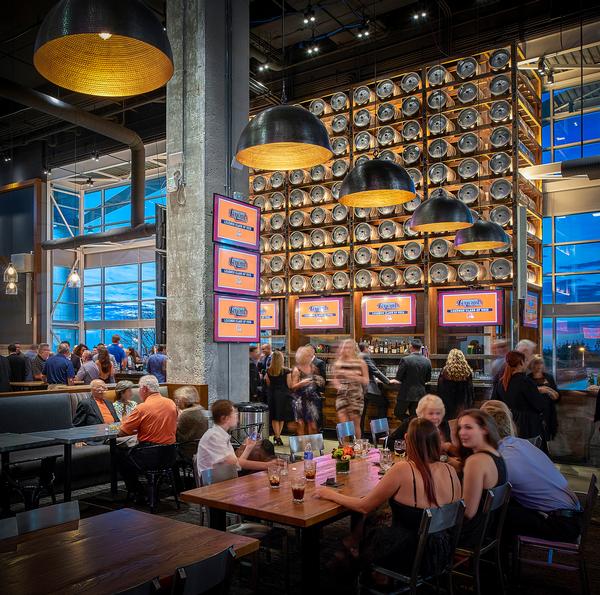Disruption
Spa shake-up
Visit a city hotel spa and you’ll probably be disappointed, says spa design expert Adria Lake. Here she explains why hotels who are willing to challenge a tired and formulaic typology can prepare to reap rewards
The urban hotel spa design is ripe for a disruption. The existing model is outdated and no longer serves the hotel nor its guests.
Spas in urban hotels are suffering from a “familiarity” disease. The guest capture rate has continued to decline as the novelty has worn off and nowadays most urban hotel spas find it challenging to compete with independent day spas offering better access and lower prices for similar products and services just outside their doors.
Urban hotel spas now share the fate of gyms and pools of having become amenities rather than profit centres. In the past five years, I have seen many hotel brands scrambling to evolve their spa design standards to improve performance and stay relevant. But, these design standards still adhere to the same stale template. Almost all other hotel facilities (rooms, restaurants, lobby) have gone through gamechanging transformations, but the spa, gym and pool face a status quo bias – the preference of using the status quo as a reference point, as any change from that baseline is perceived as too big of a risk. In reality, keeping the status quo is the biggest risk of all.
So, what will it take to disrupt urban hotel spa design? First, let’s be clear. Disruptors are not fixers. They don’t improve, fine tune, or modify. To disrupt something is to render what existed before obsolete. Disruptors reimagine how things ought to work by breaking moulds, tossing out the rule book, thinking the unthinkable, and bringing about a whole new way of doing, living, being. Still interested? Read on.
‘Wellness without walls’
Shrink the spa’s footprint, increase its utility and expand the spa experience. Who says that a spa must be confined within four walls? What would a spa with no walls look like? What if instead of “going to the spa”, we invite guests to discover “well” experiences in unexpected places?
All spa designs are currently guided by a familiar guest flow – a sequence of services and facilities expertly formulated by spa consultants and wellness experts to enhance the guest experience.
A typical spa guest flow (see diagram: Conventional spa guest flow see below) generates the same floorplans and templates that have been around for decades, repeated so many times you’d be able to navigate most spas blindfolded.
The template also treats guests as passive participants of a process (so-called journeys or rituals), not individuals with different needs and preferences capable of creating their own dynamic wellness experience.
The current thinking goes that a standardised sequence of services delivers a consistent and enjoyable guest experience. Unfortunately, this uninspiring and outdated approach serves a tiny portion of the hotel guests and disregards the rest.
Imagine, instead, a disruptive design that ignores the rules, intrigues and invites guests to give it a go. Visualise spaces designed to be intuitively useful and relevant to most, not just a few, hotel guests. In place of a spa menu, think of unlikely encounters, brief but magical moments of discovery, off-the-cuff but unforgettable experiences.
A disruptive “wellness without walls” design consists of unexpected spaces dispersed throughout the hotel where guests are encouraged to share experiences with friends, strike conversations with complete strangers, learn a new meditation technique from a fellow traveller, arrange a morning run with a local marathoner, or catch up on work while getting a quick pedicure and a shot of turmeric ginger vodka.
Will you lose your faithful spa clients who expect to be coddled and pampered? Not necessarily, but even if you do, this roughly 3 per cent (the average guest capture rates in urban hotel spas) segment of the market is well catered to already. Wouldn’t you rather have a shot at the ignored 97 per cent? The decision is a no-brainer for disruptors.
Let’s now consider a more detailed description of four different types of spaces (see diagram: Conventional vs disruptive models on p. 166) that make up the disruptive “wellness without walls” design:
1. Social spaces
Fun, engaging, brightly lit, open spaces that allow guests to meet, mingle or just be a part of the scene. Social spaces are currently the domain of the food and drink sector, like restaurants, cafés and bars. Although many urban hotels have also transformed their lobbies into trendy social gathering places by blurring the lines between function (checking in and out) and fun (meeting, entertaining, dining, drinking), urban hotel spas haven’t quite figured out how to have fun and join the social scene.
Most hotel spas are sombre, isolated and dimly lit. We forget we are social creatures who crave interaction and companionship, especially in new, unfamiliar places.
Social interactions, making friends, learning by doing, or being part of it are as therapeutic, sustaining and gratifying as the best therapies – often more so as they are fun, surprising and spontaneous rather than staged. A disruptive brand embraces the unpredictability and randomness of it all.
2. Silent spaces
Yes, silence still has a place in our “wellness without walls” design. But not necessarily in places that you’d expect. In fact, we appreciate silence, even more, when we find it in the most unexpected places.
3. Sensorial spaces
Read any spa menu, and you’d think that spas have a monopoly on sensorial experiences. In reality, your spa sensorial experience usually entails choosing your massage oil, walking through candle-scented corridors and experiencing the soothing touch of your therapist’s hands while listening to softly piped-in music.
Our sensory nervous system is capable of so much more. Sensorial spaces not only awaken our senses but spark creativity, calm the nervous system, heighten neurological functions, support and strengthen other biological systems and provide therapeutic effects.
4. Serviced spaces
Compact, multi-functional spaces designed to maximise guest offerings and experience optimise the hotel’s space utilisation and revenue while minimising operational costs and maintenance. While the previous three types of spaces provide guests with dynamic, spontaneous, DIY experiences, serviced spaces offer personalised experiences delivered by highly qualified, consumer vetted local experts and providers.
Serviced spaces are designed to reduce or do away with the high operational costs of servicing and maintaining treatment rooms, gyms, and other spa facilities which currently require full-time staff to operate.
Virtual communities
It’s time to activate your under-used spa facilities by joining the virtual community and digital economy. But what should you do with a functional and operational but unprofitable urban hotel spa? Many hotel operators justify non-performing spas by playing the “service trumps profitability” card. Nonsense. If a facility is not profitable, then there must not be adequate demand to justify its existence.
Guests are also drawn to successful establishments. That is why a great restaurant has a long line of customers, while the not-so-great restaurant is empty.
An under-used spa is a disservice to both hotel and guests. So, rather than shifting its operating costs to a third-party operator, get rid of it or join the digital economy.
How? Add a roster of highly qualified, certified local therapists, beauticians, stylists, personal trainers, life coaches, nutritionists and well-reputed masters to your hotel app and allow them to use your spa facilities to conduct their services and pay per use by sharing their revenue with you. Now, instead of a spa menu that reads like a thousand others, your guests will have access to the services of local experts, the chance to meet extraordinary individuals you can’t afford to have on your payroll and “one-off” experiences that cannot be staged or choreographed.
Hotels are extremely protective of their brand standards, access to their facilities, and their guests – a mindset that is outdated if not obsolete. We forget customers have access to just about anything they want via their phones, and your guests’ personal data is available and traded in the open market.
I imagine that in the near future the urban hotel spa could be replaced by an app that gives guests access to unlimited, pay-as-you-go services. Unthinkable? Exactly.
Spaces to rethink
Locker rooms: If there was ever a relic of the past, locker rooms take the prize. In the age of personalised spaces and experiences, why do we still tolerate communal showers, toilet stalls and impersonal changing and grooming spaces? Locker rooms take up a lot of real estate, require constant monitoring and offer no added value to the guest.
Many hotels attempt to enhance the dreadful locker room experience by featuring hydro-thermal facilities that increase cost and require maintenance but bring no additional revenue to the hotels. Worse, most guests skip the small, dark, and hygienically questionable steam/sauna and whirlpools inside locker rooms and head to the bar or back to their room rather than sit alone in a barely warm steam room inside an uninspiring locker room.
How to design a disruptive locker room? Replace them with first-class lounge style unisex personal grooming pods where guests have complete privacy and can always count on fresh and sparkling clean facilities. Two compact pods (requiring less than 20sqm of space) are more than sufficient for a 200-room hotel as most guests prefer to shower in their rooms.
Relaxation areas: Since when is a forced or programmed downtime relaxing? Yet most spa designs call for extensive relaxation areas. And lately, they have become even larger, as hotel brands equate “relaxation” – the number one reason most often cited for going to spas – with a demand for bigger relaxation areas. I would wager that guests prefer treatments or therapies that relax them, and would be happy to head back to their rooms for a good nap or sleep.
Another reason that’s often cited when attempting to justify the size and waste of relaxation areas is the proverbial “extending the guest experience”. The disruptive “wellness without walls” design expands the guest experience outside the spa walls and offers social, sensorial and silent spaces to increase and improve each and every one of your guest’s wellbeing, rather than allocating prime real-estate to extend a very small portion of your hotel guests’ spa experience.
Treatment rooms: There is really no justifiable reason for designing spa treatment rooms that are larger, more luxurious and better equipped than the guest rooms themselves for one simple reason: only a small fraction of your hotel guests use the spa, but every single one of them has paid to use their room. Invest in your guest rooms and design and equip them to optimise and support the wellbeing of 100 per cent of your guests.
Spa treatment rooms should be designed to optimise the delivery of each treatment. Just as a well-designed kitchen allow a chef and his crew to produce the best possible meal for the restaurant guests, a spa treatment room design should focus on the needs and requirements of the therapist or service provider. Only then can a guest feel cared for and get the most out of their treatment.
Gym and pool: Along with the locker rooms, conventional gyms and pools are the triumvirate of hospitality white elephants – they have become useless, troublesome, expensive to maintain and impossible to get rid of. Rather than competing against independent gyms with their huge facilities and choice of equipment, hundreds of classes, programmes and trainers, or designing a hotel gym for just a few hard-core gym-goers (the converted), urban hotels would do well to re-design the gym and pool as a mixed-use “wellness without walls” facility (see diagram: Disruptive gym and pool layout on p. 168).
Silence, sleep, solitude
In our “wellness without walls” design, silence, sleep and solitude belong mostly in the guest rooms, rather than in the spa.
To begin with, each guest should be able to take it for granted that their room will provide adequate sound proofing, a good night’s rest and complete privacy. A “wellness without walls” designed guest room offers a great deal more. I won’t go into the details of a disruptive guest room design as it deserves its own article, but we have the technology to design hotel guest rooms that will provide a personalised environment to support and optimise each guest’s overall wellbeing and performance.
If given access, for example, a “wellness without walls” hotel room will be able to gather and sync information from a guest’s sleep tracker, activity and health monitor, daily calendar, travel apps, and other personal devices to automatically (but always with consent) set the room’s noise level (including sound and entertainment systems), temperature, lighting, sleep alarm or call in breakfast. Guests would potentially also be able to order and schedule appointments with trainers or experts in the area to ensure that they get not only the right amount of sleep, but when to sleep, exercise, eat, get medical or physical or psychological assessments from qualified professionals – all without ever leaving their room.
Like happiness, a sense of wellbeing is difficult, if not impossible, to measure or formulate. Yet, we design spas as if we own a patent on the formula. This is the reason, I would argue, that most hotel guests do not use the spa. They find comfort and wellbeing in places, spaces and experiences outside the conventional spa.
However, a disruptive “wellness without walls” design requires a very small if any spa footprint at all. Instead, unexpected “well spaces” are integrated throughout the hotel, offering easily accessible, intuitive, useful services and addictive experiences that appeal to the hotel’s key target markets, not just the typical or seasoned spa-goer.
Converting the unconverted and appealing to a much larger market by creating a product and service that becomes indispensable and addictive, that is the main goal of the disruptive “wellness without walls” design.
Disruptors understand that the world is rapidly and irreversibly changing. They identify needs not yet expressed and create products and services no one asked for. Disruptors are forces of nature, infinitely adaptable and unstoppable. Non-disruptors, on the other hand, are instinctively protective and incurable fixers. They tweak, fine-tune and adjust until one day they are sidelined, replaced and rendered obsolete.
Do you have what it takes to disrupt?
Conventional spa guest flow
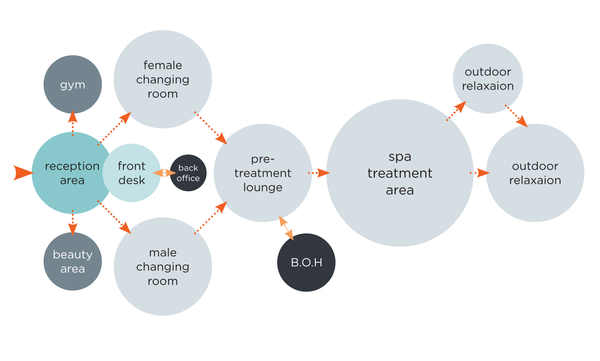
Conventional vs disruptive models
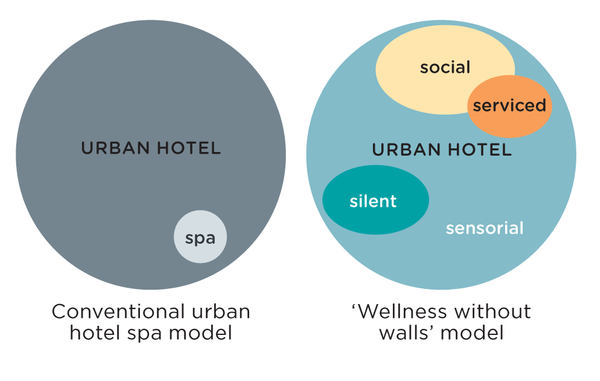
Disruptive gym and pool layout
1. Main entrance
2. Storage / janitor closet
3. Personal grooming pods (5m2)
4. Sauna (4.5m2)
5. Steam room (4.8m2)
6. Therapeutic bath (10m2)
7. Hydro-circuit (26m2)
8. Rinsing showers
9. Multi-use studio (11m2)
10.Access to biophilic space
11 Healthy shot bar
Total area 136m2
Note: Plant room for hydro/thermal facilities are not shown in the illustrative diagram
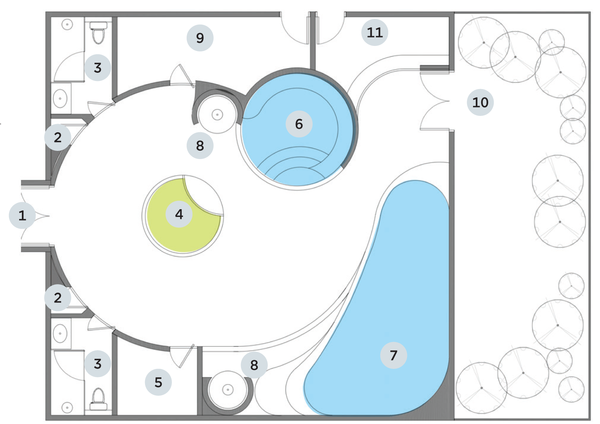
About the author
Adria Lake is the founder of wellness and spa design company AW Lake Design. She has a background in hospitality having spent eight years overseeing the family portfolio of Asian hotel and real estate. Lake founded her spa concept and design firm in 1999 and it now has offices in Indonesia, Singapore, Hong Kong, China, the UK, the US and Dubai.




